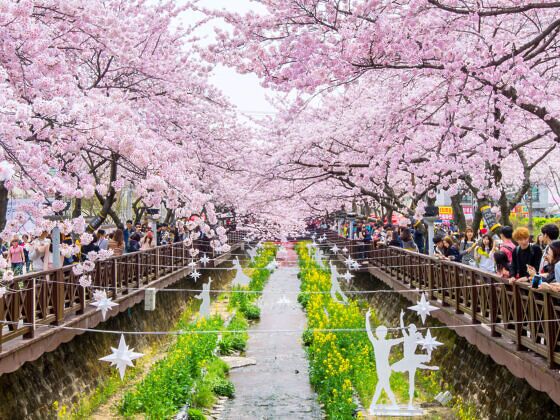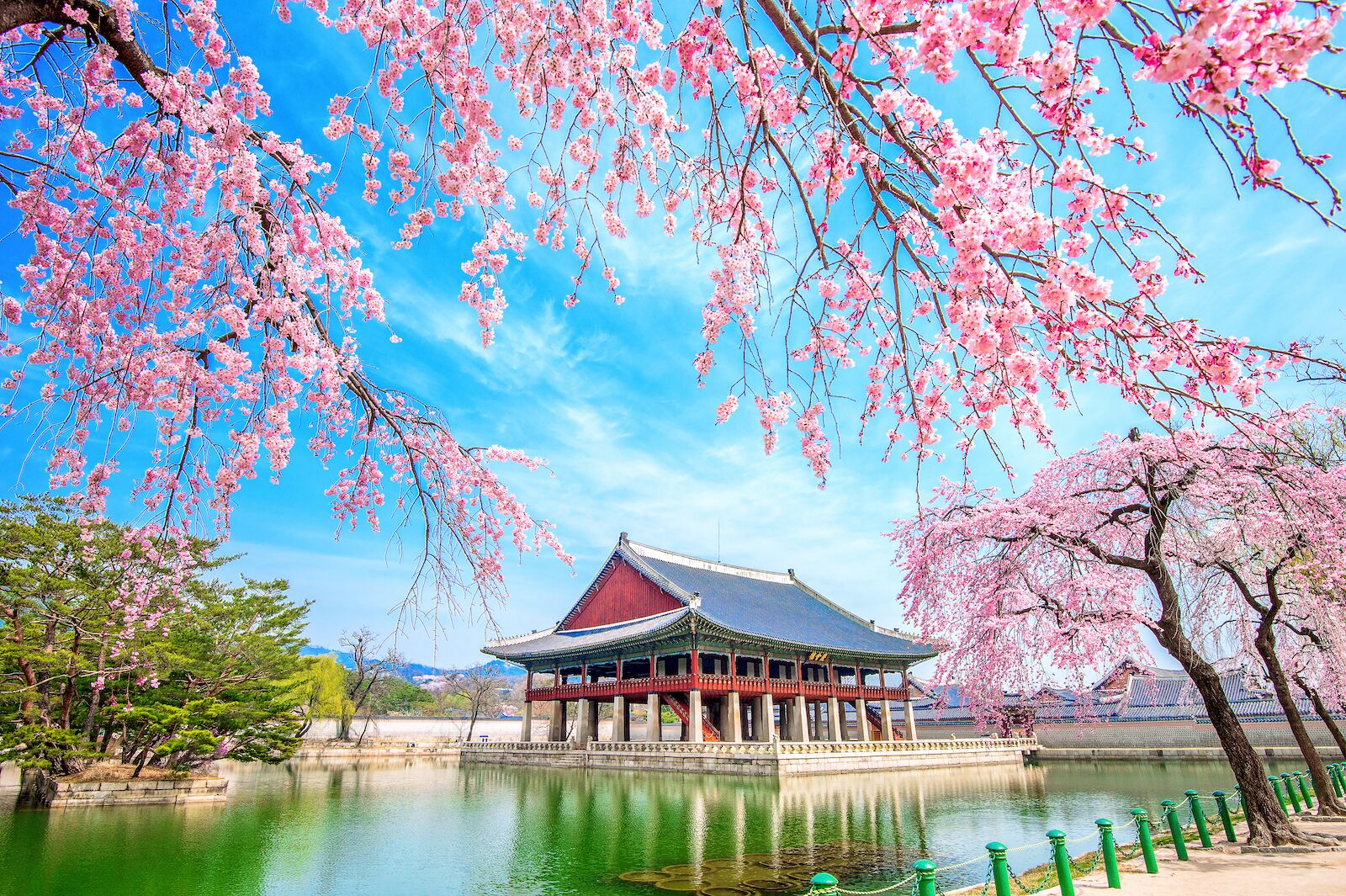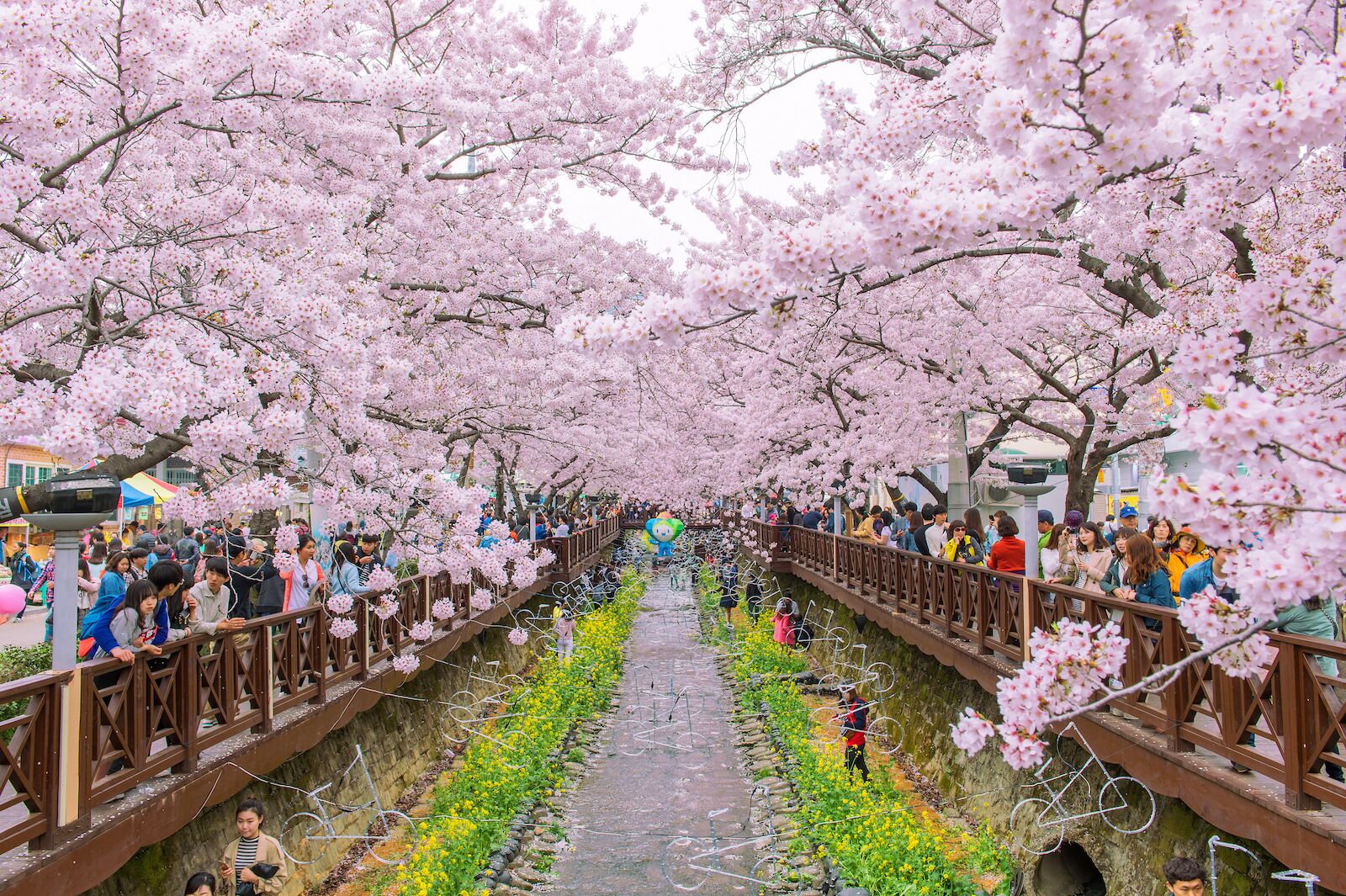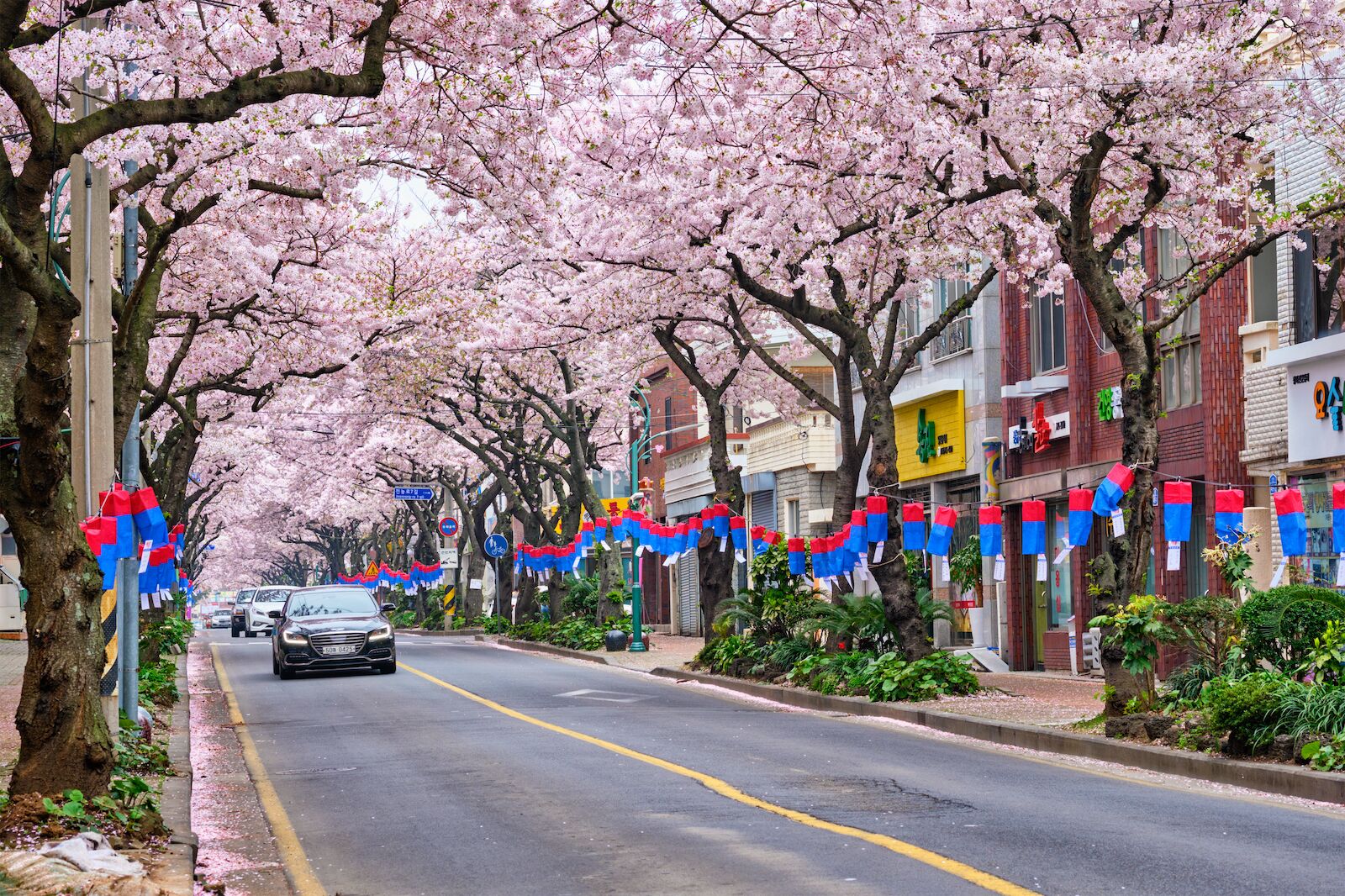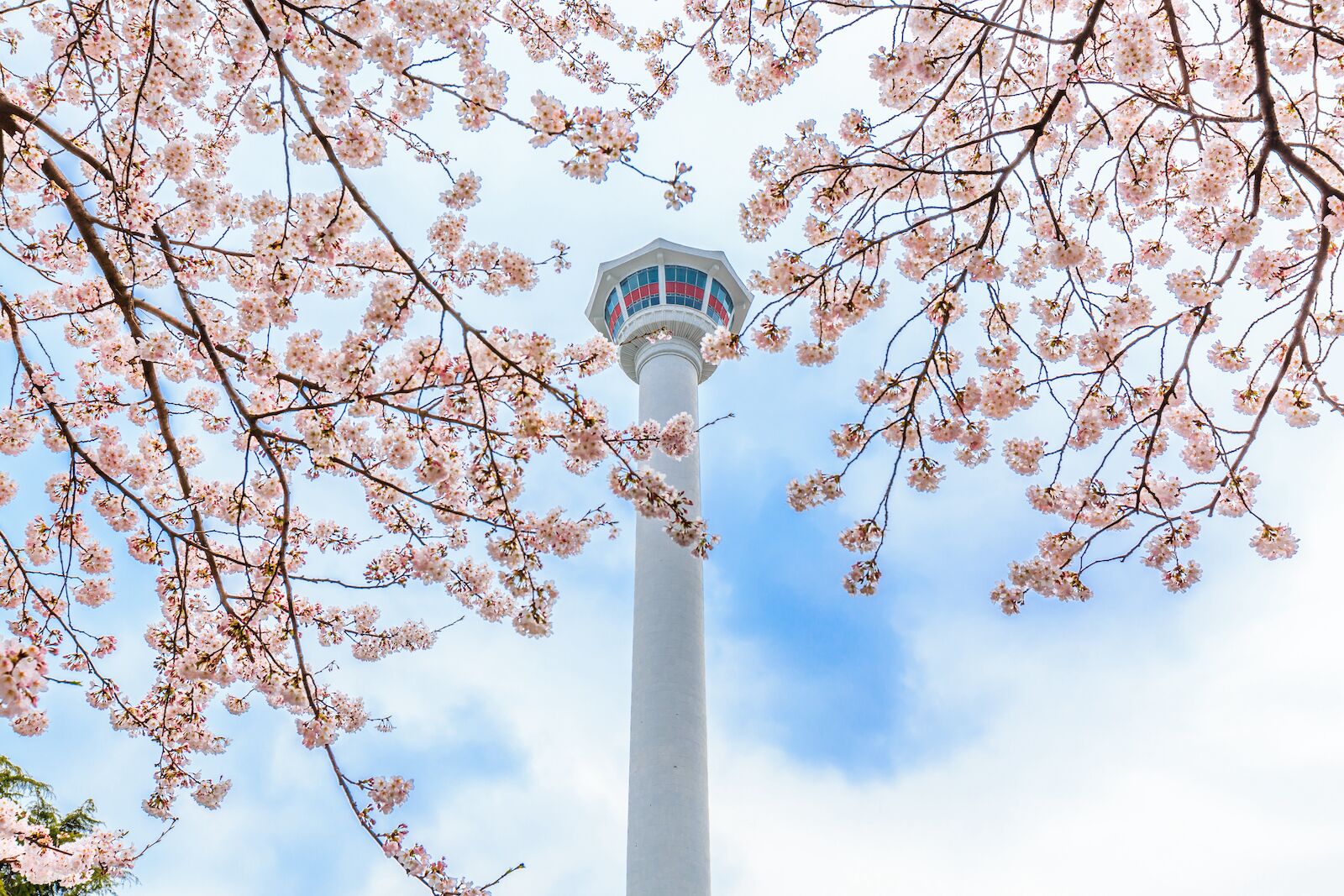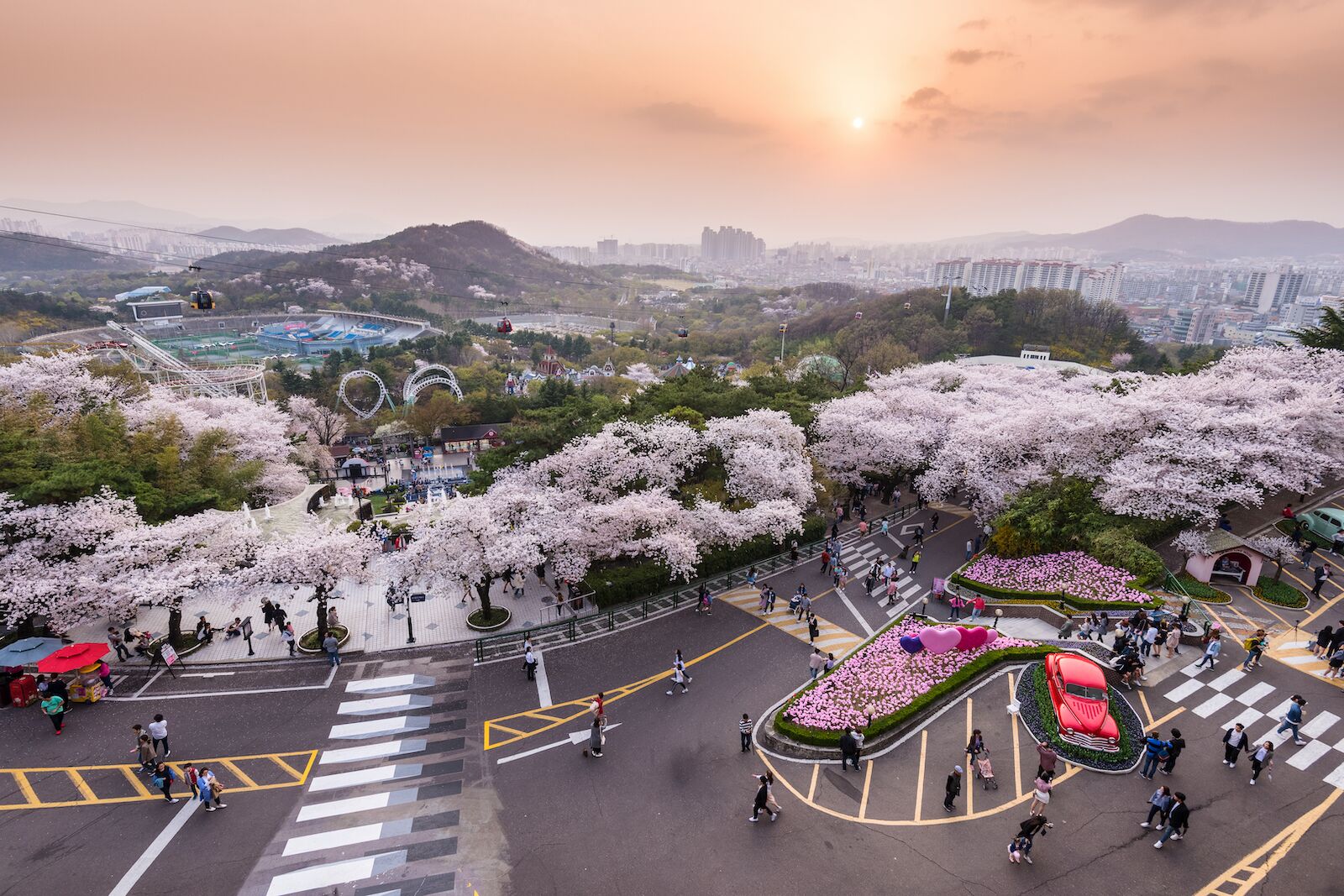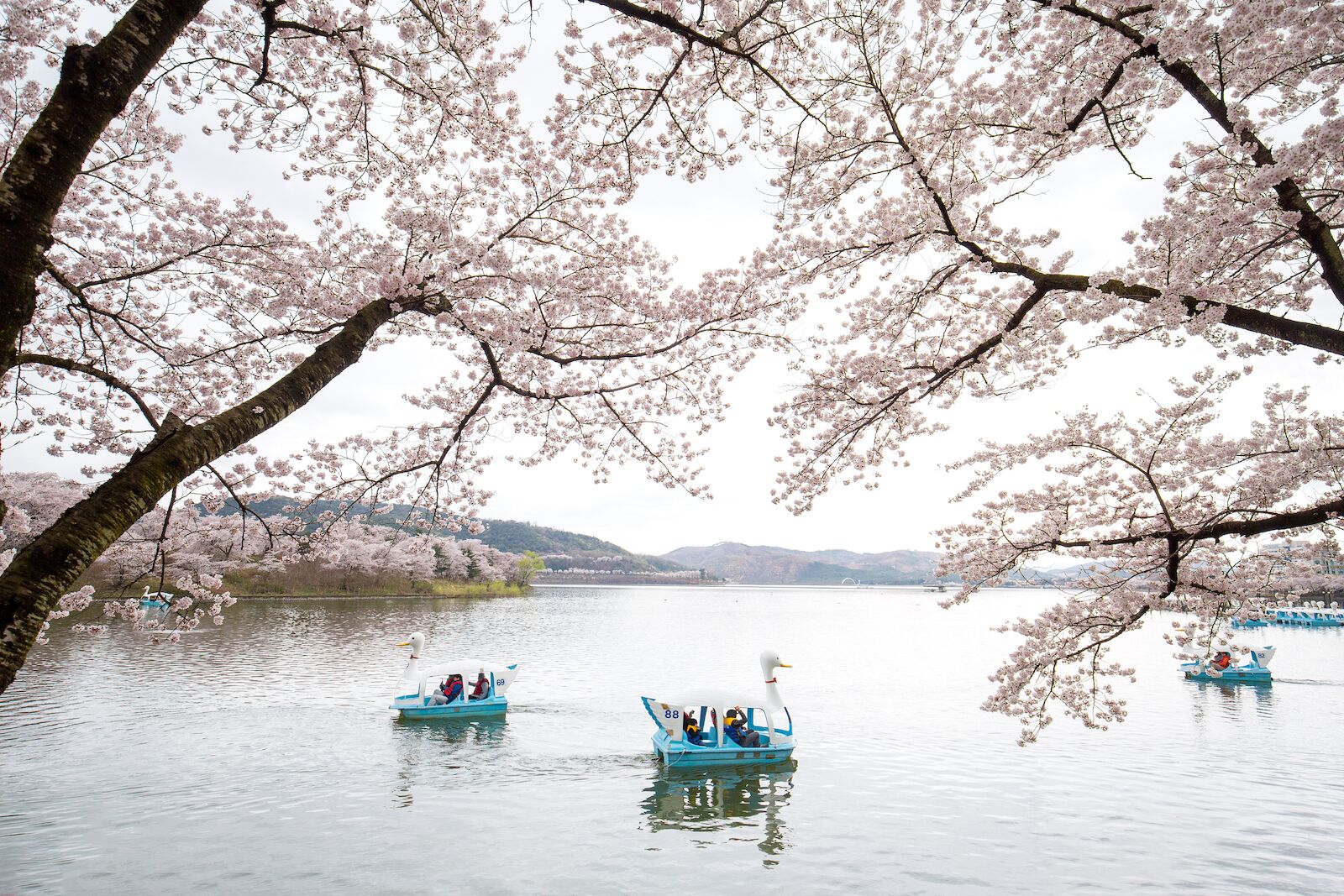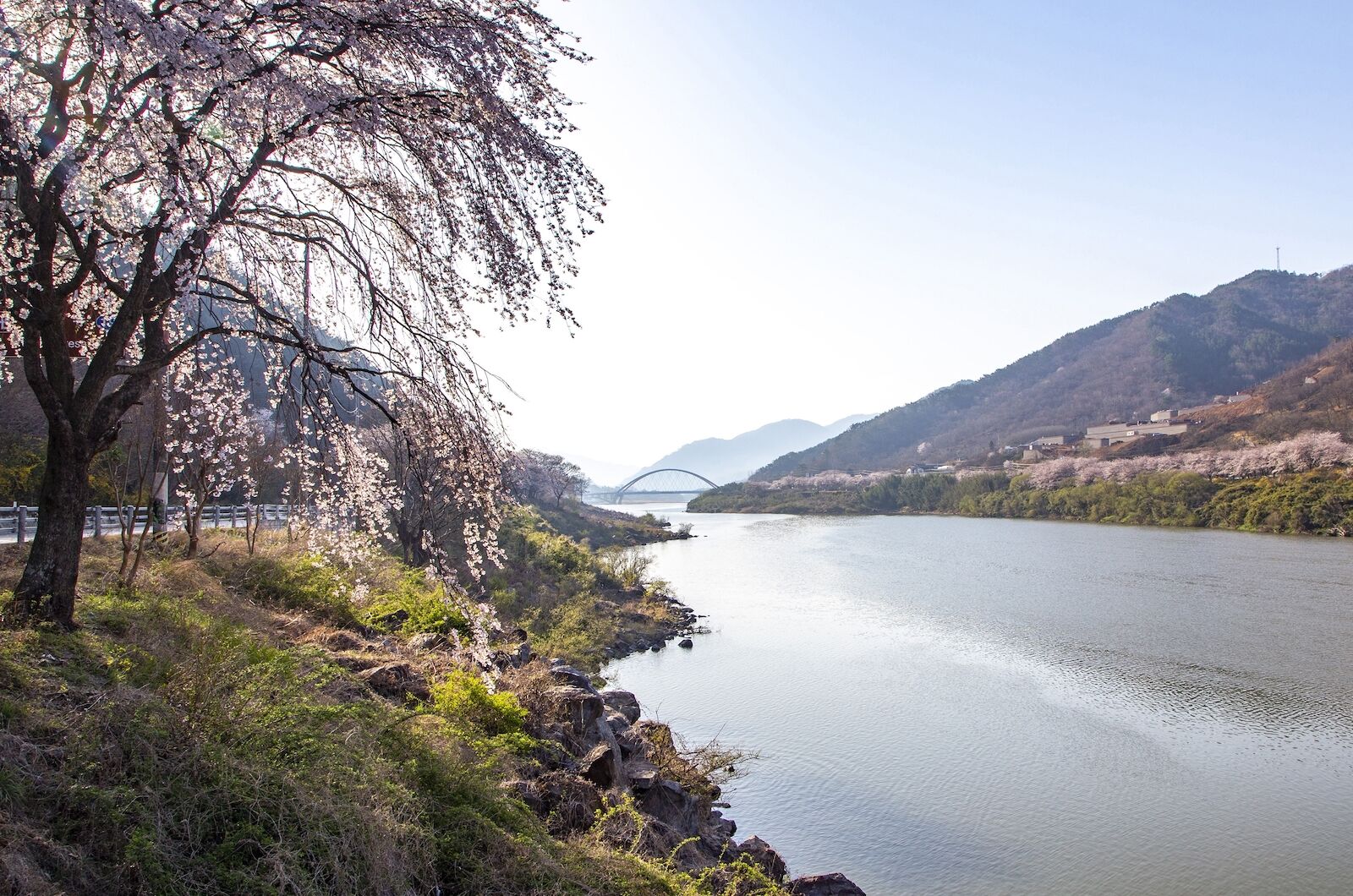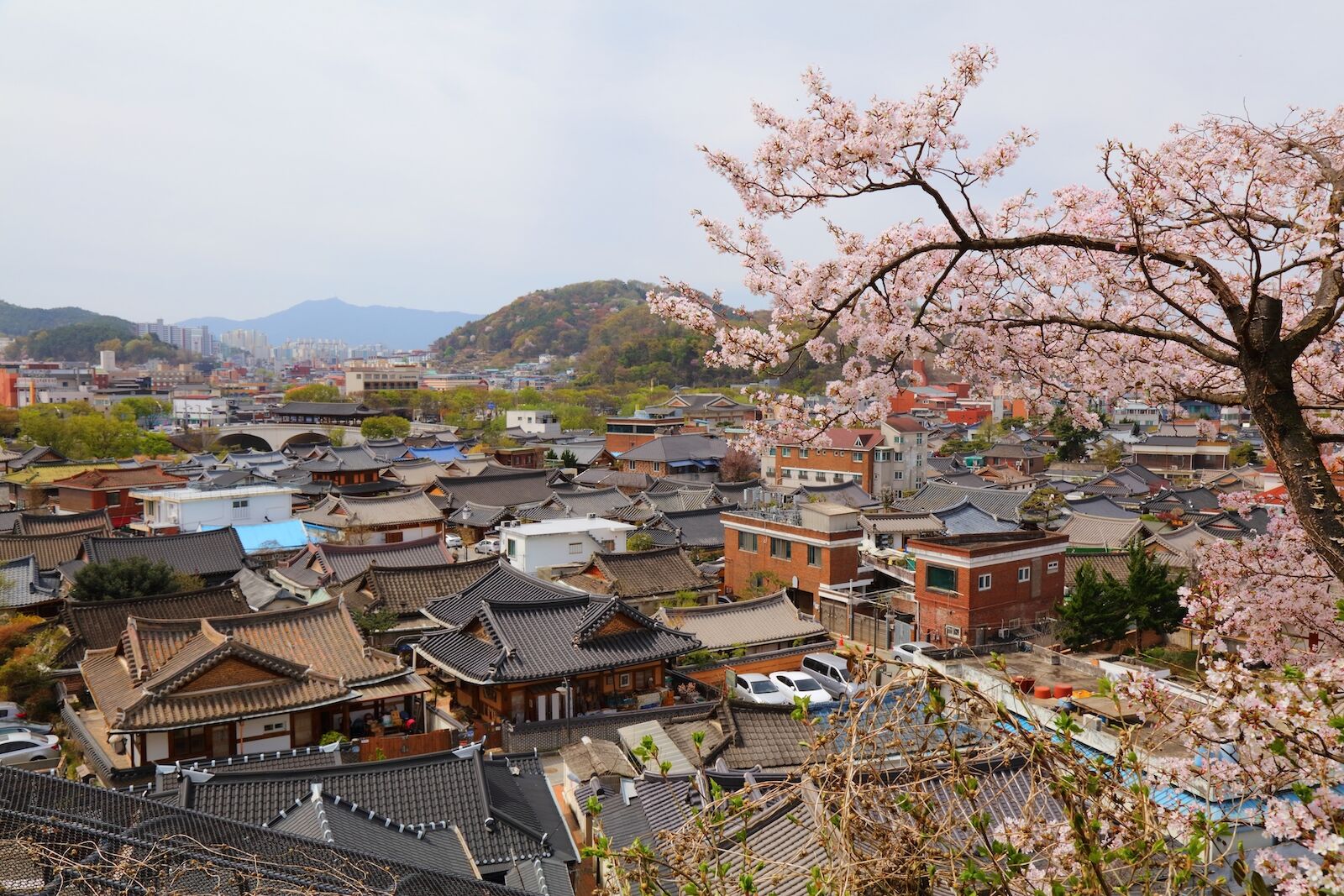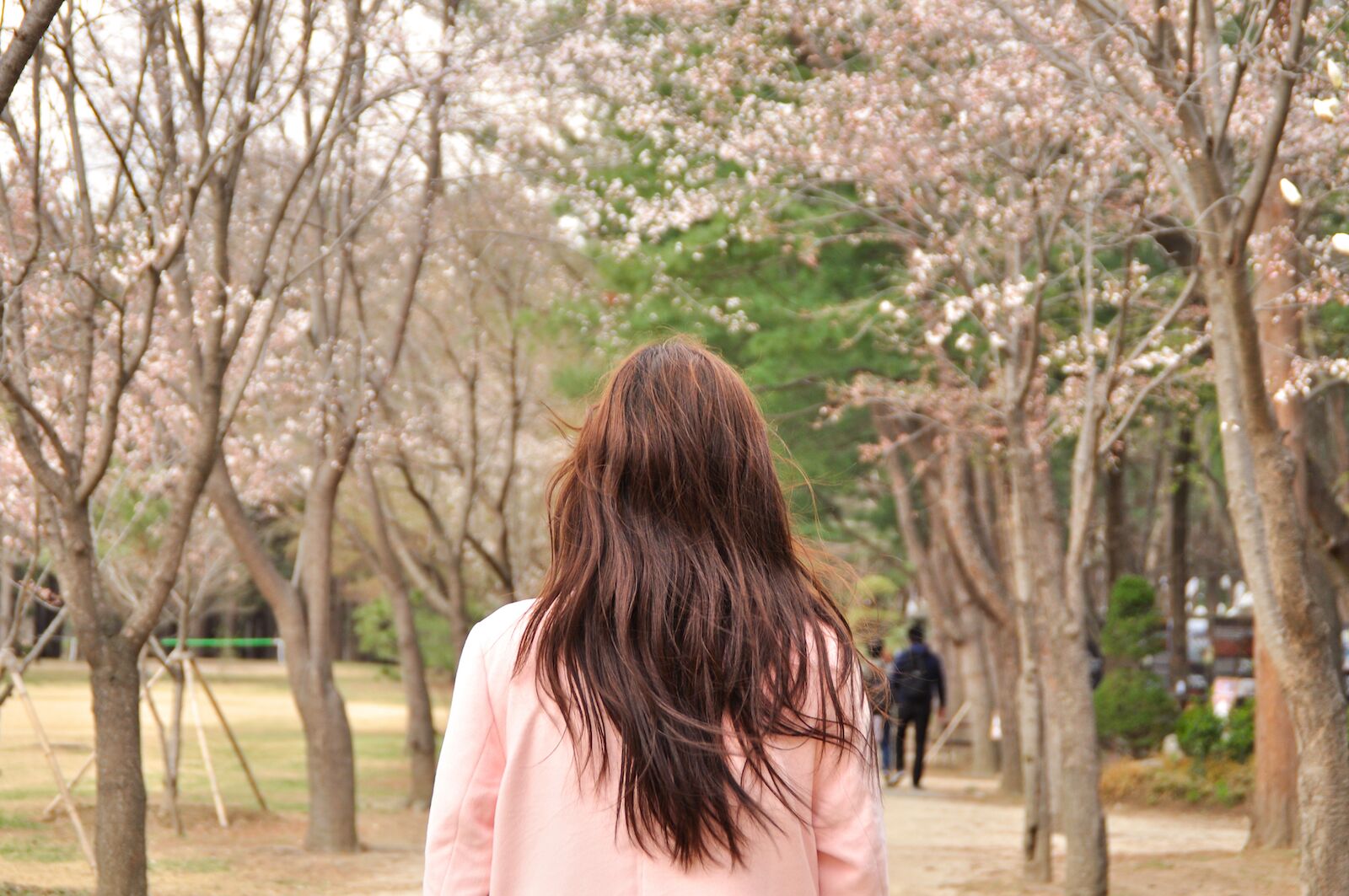Spring is a season that announces itself loudly. In South Korea, canopies of pink and white cherry blossoms double as banners declaring that spring is here.
Cherry blossoms are commonly associated with Japan, but that’s not the only place they bloom. Throughout the 20th century, Japanese diplomats gifted cherry blossom trees to several international cities — including Washington, DC, and Vancouver — while Japanese colonizers brought Yoshino cherry blossoms to South Korea in the late 1800s. A distinct species known as the king cherry tree already existed on Jeju Island in the Korea Strait, however. South Korean and Japanese media outlets have debated whether or not the cherry blossom trees in Washington, DC, actually originated on Jeju Island, but at least one thing is certain: South Korea’s cherry blossoms, or beotkkot in Korean, rival Japan’s sakura in both their ephemeral beauty and cultural significance, symbolizing rebirth.
